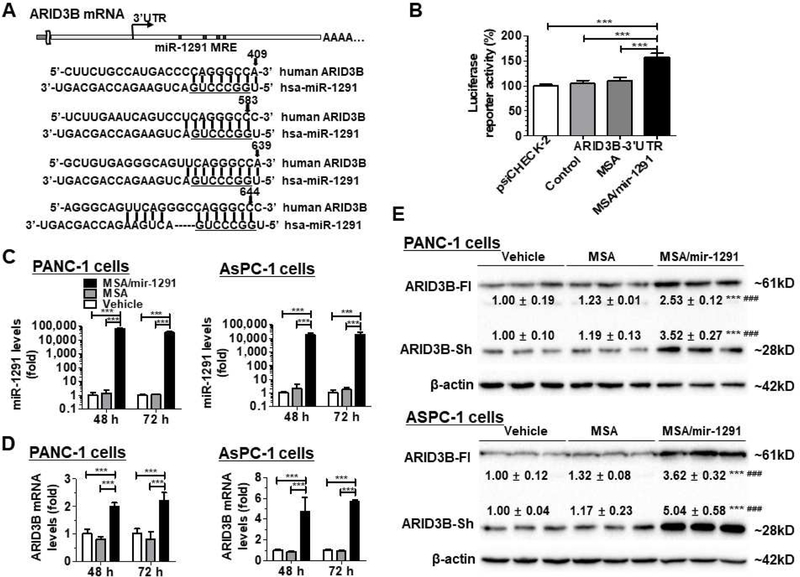Fig. 1.

MiR-1291 targets ARID3B and upregulates its expression in human pancreatic cancer cells. (A) Computational analysis identified four putative MRE sites for miR-1291 within the 3’UTR of ARID3B mRNA. Underlined is the seed sequence of miR-1291. (B) Dual luciferase reporter assay indicated that ARID3B 3’UTR luciferase activities were increased about 50% in AsPC-1 cells treated with MSA/mir-1291, as compared to controls. (C) qPCR analyses revealed that MSA/mir-1291 was selectively processed to mature miR-1291 in PANC-1 and AsPC-1 cells, and subsequently upregulated ARID3B mRNA levels (D). Values are mean ± SD (N = 3). ***P < 0.001, compared to corresponding control (1- or 2-way ANOVA). (E) Immunoblot analyses showed that ARID3B protein levels were elevated in PANC-1 and AsPC-1 cells after transfection with bioengineered miR-1291. Both the full-length ARID3B (ARID3B-Fl, ~61 kD) and the short-form ARID3B (ARID3B-sh, ~28 kD) were upregulated in PANC-1 and AsPC-1 cells (72 h post-transfection), as compared to vehicle and MSA controls. β-actin was used as a loading control, and then the protein levels were normalized to vehicle group for comparison. Values are mean ± SD; ***P < 0.001, compared to vehicle; ### P < 0.001, compared to MSA (unpaired Student’s t-test).
